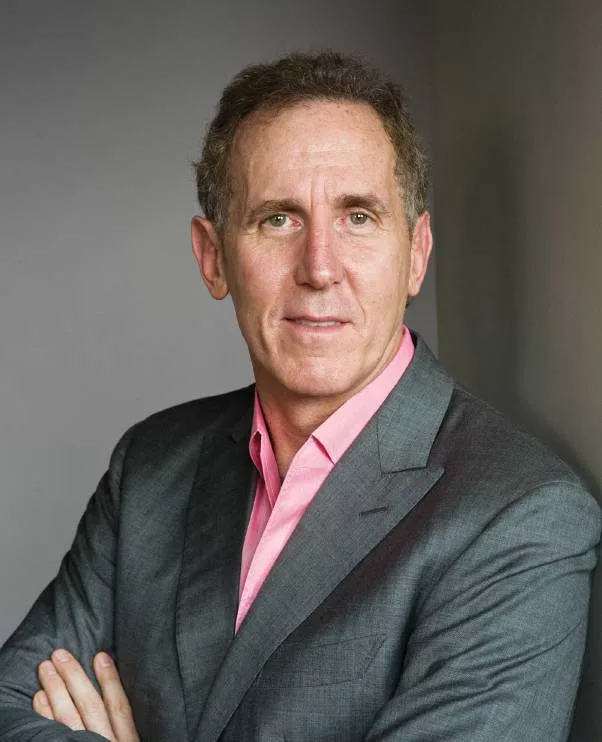IN MANY CIRCLES, TONY SCHWARTZ NEEDS NO INTRODUCTION.
Through his work at The Energy Project, the company that he founded in 2003, Schwartz has established himself as one of the foremost experts on employee energy and performance. His writing is regularly featured in the New York Times, he had the most popular blog for the Harvard Business Review for three years running, he has written two New York Times bestsellers (“The Way We’re Working Isn’t Working” and “The Power of Full Engagement”), and he regularly keynotes at conferences worldwide. Tony shared his insights with us on everything from the shortcomings of mindfulness to what is needed to shift the paradigm of leadership.
ON CREATING CHANGE
What I’ve learned since the day I started doing this work twenty-something years ago is that the only way to begin to shift the way people think is to start out by speaking to them where they live currently. Where corporate public businesses live, and to some extent even private businesses, is to see the world as profit, and when it comes to public companies, quarterly profits. I’ve always been interested in subjects that seem to organizations, historically, to be secondary to their primary concerns and more subjective and on the fringe.
When it comes to change, although we wish it weren’t so, the primary and often the only reason people change is because the pain of whatever it is that they’re doing exceeds the pain of imagining doing something else. Over the last five years, dating back to the end of the recession, a real and dramatic shift in demands has occurred. The reason it has changed is, first, so many people got laid off during that era that, when companies suddenly had demand for their products and services again, they had so many fewer employees to deal with. And second, the much more profound reason for the change is that, over the last several years, the demands of technology have become virtually intolerable for people and for organizations. Digital technology has created so much more input into people’s lives as far as expectations go, both around the volume of information they’re expected to deal with and the frequency with which they’re expected to deal with it, that for the first time maybe in human history, we’ve gotten into a situation where people just can’t do more. They can’t do all the things they’re being asked to do. So that’s the framework in which I think the openness to a new way of thinking has begun to emerge. It’s a reaction to an experience of desperation.
ON EMPLOYEE ENGAGEMENT
I think the era of engagement is actually relatively obsolete, meaning engagement as a measure of performance, or likely performance, simply isn’t a sufficient measurement anymore. The definition of engagement is the willingness to invest discretionary effort on the job, the willingness to go the extra mile, the sense of commitment that makes a person show up with more motivation. But willing no longer guarantees able. So even if you have a highly engaged workforce, what you really want to understand as a leader is whether people are both willing and able. That’s the key.
The way we look at it at The Energy Project is that the way in which you get the most energized workforce – meaning the way in which you get people to bring all of themselves to work everyday – is by meeting their core needs. And you can’t meet just one need – like the spiritual need to be doing something that’s serving something beyond profit – and expect that that by itself is going to be sufficient.
You have to meet all the four core needs. One of them is the need for a sense of meaning and significance from your work, but the others are a need for a sustainable life at the physical level, the need to feel valued and cared for at the emotional level, and the need for self-expression at the mental level through feeling that you can contribute in some unique way to the company you’re working for. When all four of those needs are met, that’s when you get a workforce firing on all cylinders.
In our research with the Harvard Business Review, of the 20,000 people that we surveyed, 60 percent said that their companies were not meeting a single one of those four needs. Conversely, when a person tells us that just one of those needs is being met, every performance variable that we studied went up, and it went up on a straight line based on the number of needs met. So, if two were met, they outperformed those who had just one need met, and three more than two, and four more than three. That’s really what we think of as the key to creating a work environment that leads to a fully energized workforce.
ON SHIFTING THE LEADERSHIP PARADIGM
The paradigm shift that needs to occur in leadership is away from the assumption that human beings are capable of operating the same way machines or technology do – meaning at high speeds, continuously for long periods of time – toward recognizing that human beings actually operate very differently from machines. They have these complex ranges of needs and you can’t meet them in the same way that you meet a machine’s needs. A machine really doesn’t care whether or not you appreciate it. It doesn’t care whether or not it’s working in service of a higher cause, and it doesn’t think about whether or not working long hours is going to eventually burn it out, although even machines get burned out by being operated for too long continuously.
The real shift is toward thinking of sustainable performance and energy as being a function of treating people as whole human beings and being concerned not just with the work skills they bring to the table but also with what’s going on inside them that makes it possible for them to bring those skills to work. Bizarrely, because the metaphor for how people should work has been machines, the result is that we pay almost no attention in the workplace to how people feel, even though how they feel is directly connected to how they perform.
The way I look at it is, America’s corporate world and the global corporate world have been focused on the “what” for 200 years since the industrial revolution – by the “what” I mean the strategy and execution of business plans – and they’ve been focused almost not at all on the “how.” They’ve focused on what’s externally visible at the expense of what’s internal. The combination of the shift from seeing people as machines to understanding that they are human beings, and from seeing them as simply a function of what they do that’s visible to being aware of what they feel, is the heart of the paradigm shift that I think needs to happen. The emotional component is at the very heart of this paradigm shift because how people feel is emotional. That’s what feelings are, they’re emotions. If you learn how to skillfully manage your own emotions and you learn as a leader how to better manage the emotions of those you lead – presto! – you’ve got a whole new level of capacity that you’re tapping into.
The trendy focus on mindfulness as the solution to all these problems – beginning with the problem of how exhausted people are – is a typical, superficial solution to a complex problem. While I have no complaints with people who use mindfulness and any other meditative technique to quiet their emotions, to calm their bodies, to focus their attention, it doesn’t address the core emotional issue that we’ve been talking about, which is that people don’t feel at work the way they need to feel in order to perform at their best. The way they need to feel is what we call high positive emotion: they need to feel good, they need to feel happy, they need to feel excited, they need to feel optimistic, they need to feel cared for. You don’t get that by sitting for 15 or 30 minutes and breathing deeply. You get that by the way you are treated by those who have dominion and power over you.
ON THE MOST COMMON MISTAKES LEADERS MAKE
The most common mistakes that leaders make stem from the inattention to, and the failure to make important, those needs of people that most profoundly influence their capacity to perform. Raj Sisodia, the co-author of “Conscious Capitalism,” has been very articulate about this. We privilege one set of qualities among leaders almost to the exclusion of another. By that I mean the archetypically masculine qualities are generally valued – like toughness, while in no way giving value to gentleness; or honesty but not empathy; and action-orientation but not reflectiveness; and drive but not renewal and recovery.
So what we’ve done is we’ve left out 50 percent of the qualities that are necessary for effective conscious leadership and pretended that leadership is a function of the other 50 percent. For example, you take a quality like honesty and you say to yourself, “Why wouldn’t you want people to be honest?” Of course you would, that’s the first thing you want to be sure of. Honesty or integrity is in virtually every statement of values of the big companies – not that they necessarily live by it, but it’s certainly a stated value. The reason that honesty is valued is in part that its opposite, dishonesty, is so insidious. But honesty, when it’s overused, becomes cruelty. Honesty is not a virtue by itself. Honesty is part of a set of virtues, namely honesty and empathy, or honesty and compassion. If you have too much honesty, you get cruelty and it becomes a toxin rather than a value. And that’s the way we run American businesses. We over-rely on certain qualities in order to avoid their negative opposites, not recognizing that we need a balanced relationship when it comes to these qualities because any overused quality becomes a liability.
If you’re a musician and you only have a certain number of notes available to you, invariably at some point you’re going to play that note too many times. At the heart of the new work that we’re doing is really looking at what it means to be wholly human, and I just described an example of what it takes to be wholly human. You don’t need more traditionally masculine qualities or more traditionally feminine qualities, need to embrace both. The most commonly accepted strengths are not necessarily strengths when they’re overused. Courage overused becomes recklessness. Courage, to be effective, needs to be tempered by prudence. Confidence overused becomes arrogance, which needs to be tempered by humility, but we haven’t valued humility, we’ve only valued confidence. And what do you get? You get an awful lot of the disasters that we have in business as a function of arrogance, overconfidence, and so on.
Essentially what we’re talking about now is consciousness. Higher consciousness, which gets dismissed in the business world as soft and woo-woo, in its most practical sense simply means feeling more and excluding less. It’s seeing the whole. It’s the full range of what’s possible. The work we’re doing is to try to awaken in people the full range of not only who they are but who they could be, because the only way to increase capacity – which we must do in this more and more demanding and complex world – is to get access to more qualities and more choices that you can make in any given situation. There’s no way you’re going to work more hours without a tremendous cost, all the way from just plain lower productivity and lower quality when you work too many hours, all the way to sickness and even death when you overvalue work at the expense of rest. Work is a virtue; too much work is overwork, and the balancing opposite is often rest and renewal. In the new paradigm, we value rest and renewal because we recognize it’s a part of what it takes to be sustainably high-performing or to be able to work at your best. The highest value isn’t derived from the number of hours you’ve worked, it’s derived from the energy you are able to bring to whatever hours you’ve worked. That’s a big shift.
“The highest value isn’t derived from the number of hours you’ve worked, it’s derived from the energy you are able to bring to whatever hours you’ve worked.”
ON THE FUTURE
I’m incredibly hopeful. I am an optimist by nature, so you have to discount against that! But I’m incredibly hopeful because we are working with the largest companies in America, from Google to Alcoa to Coca-Cola to Nestle to Bristol-Myers Squibb, and what we’re seeing over and over again is that the way we’re working isn’t working, which has been our mantra since I wrote that book five years ago. It’s been clearly recognized by lots and lots of the most senior executives in these big companies. There is an openness to the recognition that what got them to success simply isn’t sufficient in a world that is changing at the speed that our world is changing. We’re seeing companies, from senior leaders all the way up to CEOs, willing to try things and to challenge their own assumptions at a level that is dramatically different than it was even two years ago.
If you ain’t got hope, you ain’t got nothing, right?
59% UNSATISFIED The percentage of workers who are unsatisfied – feeling physically depleted, emotionally drained, mentally distracted, and lacking in meaning and purpose
7% NEEDS MET The percentage of people who have their core needs met at work
34% FEEL CONNECTED The percentage of people who feel a connection to their company’s mission. Those who don’t feel such a connection are 62% less likely to stay with their employers and are 45% less engaged
37% JOB SATISFACTION The percentage of people who are satisfied in their jobs
Source: The Quality of Life @ Work Study by The Energy Project and Harvard Business Review
4 CORE NEEDS IN THE WORKPLACE
PHYSICAL HEALTH
EMOTIONAL HAPPINESS
MENTAL FOCUS
SPIRITUAL PURPOSE
3 Leadership Traits that Impact Employee Performance Most
RESPECT
Employees who feel respected by their leaders feel:
• 63% more satisfied with their jobs
• 55% more engaged
• 58% more focused
• 110% more likely to stay with their organization
APPRECIATION
Employees who feel recognized and appreciated by their leader feel:
• 53% more focused
• 58% more engaged
• 109% more likely to stay with their organization
POSITIVITY
Employees with positive leaders feel:
• 54% more engaged
• 71% more enjoyment at work
• 2.5 times more trust and safety
• 105% more likely to stay with their organization
Source: The Quality of Life @ Work Study by The Energy Project and Harvard Business Review




